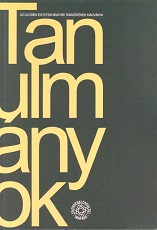UTAZÁS A TÖBBNYELVŰ (KEVERT NYELVŰ) KÉPVERSEK VILÁGÁBA
TRAVELLING INTO THE WORLD OF BILINGUAL (CODE-SWITCHING) CONCRETE POETRY
Author(s): Márta Törteli TelekSubject(s): Theory of Communication, Theory of Literature
Published by: Филозофски факултет, Универзитет у Новом Саду
Keywords: multimediality; concrete poetry; code-switching; reception; understanding
Summary/Abstract: The paper examines the complex phenomenon of intermediality, “multimedial transgression”, “culturally agitating hybridity” resonating and flashing over ages and cultures. It reviews concrete poetry, which may be considered as a real multimedial text with linguistic and pictorial coded aesthetic message, the poetic intention evolving from the mixture of the verb and the picture. Examining from the aesthetic of reception, code-switching of concrete poetry becomes into focus of the research. We may feel that for a recipient knowing both languages (for the recipient of the concrete poetry), it is more advantageous for the speaker combining the expressions of the two languages, since one with a mixed language always relates what he would like to say on the language he can give expression to his thoughts more properly. In fact this is such a code-switching that the recipient may perceive as a single code on the basis of simultaneity of the text and picture. The study highlights the reading alternatives that the concrete poetry offers us, as well as the travel it take us to. By analysing the mode of interpretation, we can observe how visual poems overbalance the conventional linearity of the writing, how figurativity become equivalent to the text in the course of meaning creation, while the sight of the picture guides the reading, and reading of the text confirms the sight as well. Thus, the calligram practically traps the language and the picture as well. The paper describes text (concrete poetry) understanding as an integrative one, coming into existence as a result of the constant correction and supplement of situational and ephemeral understandings, and considers the hermeneutical circle/ spiral of understanding as a travel, which is always unique and not to be repeated.
Journal: Tanulmányok
- Issue Year: 2017
- Issue No: 2
- Page Range: 15-26
- Page Count: 12
- Language: Hungarian

